Torrid and scorched; these are epithets to define Khartouran desert region in Shahroud’s Biarjmand County, in Semnan. To this natural harsh environment add the perennial drought which has hit the region out of its population: seldom would any one visiting the region spot young people; they had long abandoned their homes in the villages to seek their odds of success in cities miles from the heart of the desert: now here is the abode of the elderly.
Drought has found ample coverage by the local media, with headlines covering the dearth of water, either for meagre agriculture or for living; however, as Mohammad Hossein Abedi, Mehr News local correspondent would agree, only those who have the first-hand experience of the difficult life without water could bear testimony to the harsh realities of the desert life. The minds of 30,000 inhabitants of the county now entertain to come to terms grudgingly with the complete lack of water, a grim image indeed.
It is now for 17 years that drought has been keeping its sway in vast parts of the province which is an expanse starting from southern skirts of Alborz range and continuing to depressions leading to the heart of the desert. A drive of 300km to the south from Sahroud brings the tourists to the ‘gate of the desert,’ as the locals would call. Here in the last village of the county, Asbkeshan (Persian for ‘horse-charioted cart’), the beast of drought growls more menacing than anywhere else; the people, hardened and patient, have migrated to the cities to curse the environment so ungrateful to its people. But not all seek their chances in cities and have preferred to remain in their homes for the blessed hope of the coming rain; the migration however, has a strong footprints in the region, wrecking its share of havoc upon the economy and social life.

In most villages the only source of water is water tanks occasionally visiting the torrid villages provided by Biarjmand Rural Water and Wastewater Office; 20 out of 29 settled villages now receive their water solely from these tanks whose arrival triggers murmurs of happiness; but the 2,000-liter tanks of the village rapidly drains and the cycle of waiting and hydration will be go on interminably in the eyes of the villagers.
Continue 300km and you will arrive in Derazab, a village of 16 households. Only the elderly and women live in the village and the young had been too impatient to see the vanity of waiting in this desert of drought and left since long for better places to live. The remaining people usually sit in the shades of a tree; this is the only mode of life in the arid zone. The terrain and the road to the village are tortuous and difficult. For these people, the well, dug to the horrendous depths of 250 meters, has not provided a drop of water and now they would speak out to any visitor seeking their voices.
Ghodratollah is one of the village inhabitants. “Migration has reduced village population of once more than 25 households to now 16 households, each with one or two members. The life is difficult and dreary here, since Derazab has no water; a well, dug almost on the eve of the Islamic Revolution of 1979 had long been dried out,” he tells to Mehr News correspondent. “Water from underground had been reaching to the village through a canal 9km long and going parallel to the road, hence the name ‘derazab’ (Persian for ‘long waterway’); now, water is scarce and we restore it in 20-liter containers to be consumed. The heat rapidly evaporates this water within 2 hours; with the containers empty, here comes the painful 14 days of waiting for tanks to come to village; a shallow pond of stagnant water is the only source of water for washing our bodies,” Ghodratollah continues.
The well Ghodratollah refers to is an underground water storage facility now home to the garbage and would only serve for bathing in a condition when women of the village have only chance to bath every 15 or 20 days in surrounding villages. In the dearth of water, the water storage is a gem in the hands of the villagers.
The second village in our desert visit is Asbkeshan, famously called by the locals as ‘the end of the world,’ since it leads right to the Lout Desert, not far from Bardeskan and the wastes of the desert which is horrific to trek in. The village hosts only 12 households; within half an hour of our stay in the village the only people appearing to us are four elderlies, mainly octogenarians and nonagenarians; an old man of 93 and his 88-year-old wife, and two other old women who refuse to speak.
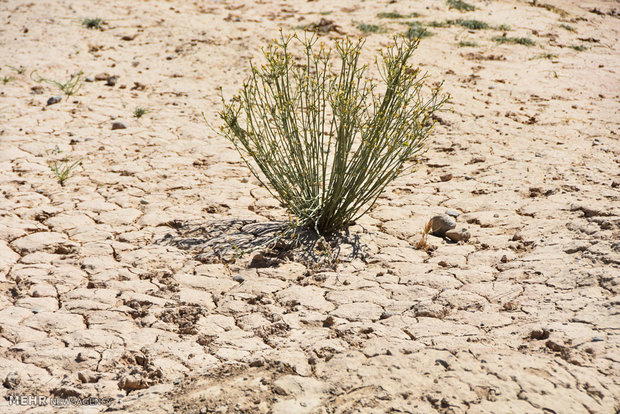
Reza Karami accosts us. His calloused hands and a sun-burned complexion are tell-tale of his difficult times and life. He says the village has drink water only two days in a week; “today is a day of dryness and even a single drop of water would not be found in the village,” he tells us. “A son of a co-villager brings us water with 20-liter containers; he would soon abandon us; indeed, we were indebted to him and would soon go for our water to an underground canal where bats live and water is far from hygiene to drink,” he sobs, in convulsions.
Garmab is a village in queue for our visit after leaving Reza Karami in Asbkeshan miles behind. Garmab would have been a tourist resort of some reputation for its spa mineral water; now however, some haggard goats grapple with finding outcroppings of some desert bushes out of the sand. This is the image the village presents lavishly to visitors; all the drought is understood when we catch the glimpse of a fawn yeanling trying to drink milk from his mother’s breast far from the maddening crowd of other creatures suffering the drought. The village is almost dead.
The common chapter of life in all Touran (Khartouran) villages is drought-induced migration of the youth to cities. A local, Valliollah Adeli, the village governor administrator gives an account of the situation; “28 households of Garmab have only 6 hours a day of water which does not suffice for everyday life; in such conditions, no young man would stay and see the doomed fate of his village,” he adds.
Fatemeh Akbari, however, is a different voice than Adeli’s. She speaks out her grievances; “the water is contaminated here; long ago, we had plenty of water and grew vegetables; agriculture flourished, and livestock were also burgeoning; but the drought has wreaked havoc on all good days and now all that has gone,” she complains.
Still deeper afield into the desert, we reach Kalateh Meri and Vahel, a village forlorn and abandoned to its own means amidst difficulties; the inhabitants would not remember the worst of situations; of government officials, no higher-ranking official than the county prefect and local governor has ever come to the village; the situation is in shambles; the first picture is children playing merrily, albeit with decrepit and discolored clothes; the village is not home to even the elderly, since here is the absolute absence of water. In comparison, villages other than Kalateh Meri and Vahel are paradise. The locals rely on the spillovers from other villages in the upstream of a river for their daily water needs.
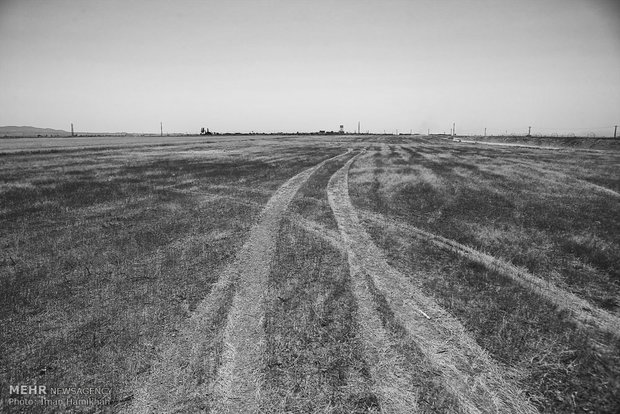
The village has been virtually deserted by its settlers, as Khanoum Goli, a villager, would say, “agriculture and animal husbandry needs plenty of water and here, where miles into the desert is dry, even resistant animals as camels would leave, since one day they will need water; the economy has crumbled thus.”
An examination in city of Shahroud of the population newly settled indicates the wave of immigration from the villages; the average villager coming to Shahroud is under 40 and usually settle in cheap and low-quality government-sponsored Mehr Housing Scheme houses. The local government official believes severely declining precipitation had contributed to the drought along with global climate change; “the sector to be severely hit is drink water in desert regions; the situation is suboptimal for agriculture and livestock breeders; government measures included reviving the underground water canals and dredging of surface aqueduct system, but all these measures have been short-term responses and failed to address and solve drought once and for all,” Rouhollah Karimi tells us; “outdated pipe networks, cracks and breakage, and decline in precipitation and in water levels are possible causes of drought.”
“To seriously address the problem, local plans have been devised which include Khartouran Water Supply Scheme which will provide water for 9 villages when completed. The work on preliminary studies and excavations is underway by relevant government bodies; wells have been dug and we only invest hope in the water output of these wells,” Karimi sums the measures.

“Village migrants comprise a new class of underqualified job seekers; their lifestyle is incompatible with city’s cramped environment and most of them are hit by the sophisticated nature of life and become depressed and indulge themselves in menial lower-paid jobs or just engage in felony,” says the county governor. “The rural economy has thus been hit, with long-term measures badly needed to redeem the life and activity in villages once burgeoning with the water present; the sum of measures rely only on the possibility of precipitations and would fail if no precipitation occurs.”
Amid the local government measures, the human crisis in Khartouran is ubiquitous and ruling the deserts. All eyes and all minds await the ultimate redeemer, rain, which had been so far fleeting. All government officials should abandon the comfort of their office desk to dare into the deserts we traversed in this report to see the realities harsh as they are, for an experience an insider would only understand properly.

We leave our real desert traveler to reflect upon the sad nature of events in the desert and begin a virtual journey where he finished in the gate of the desert. As he told us, the first city in the desert when we go deeper into the wastes of the central desert southward is Bardeskan, now in the Khorasan territories. The depression leading to the Lout Desert, the lowest point in Iranian plateau had been much envied for its challenges for any traveler either ancient or modern. The desert in central Iran consists of spectacular scenery of sand dunes and in some areas vast expenses of wind erosion material create hundreds of miles of the wilderness through which movement is difficult and cumbersome.

Our virtual journey brings us to some of the world’s most notorious desert storms further south in Kerman and Sistan where Zagros’s southeasterly tilt creates still difficult terrain and the rugged outcroppings of the rocks are visible when you have chances to spot them during travel. Few hundred miles to the east, Iranian plateau gives way to new territories where the desert gradually leads to mountainous regions of Afghanistan and where the flanks of Iran’s northern Alborz leads to mountains over the border in Afghanistan.
The virtual journey to the south puts us to a branch of the ancient Silk Road which crisscrossed the Iranian plateau and linked the cities and oases spread around the desert and provided shelter and comfort from the heat of the day. In all the inner depression of Iranian plateau to which the Lut desert is an important part, sophisticated ancient systems of underground canals provided the inhabitants means to prosper and resilience. In Tabas, which lies midway in the long road between Sabzewar and Yazd, the most inhospitable climate governs the lives of the sparse population of desert dwellers. Since the times immemorial, desert had been formidable, tantalizing as its mirages to the caravans of the Silk Road or lonely travelers of the Europe who dared to challenge the very concept of the desert by following the Silk Road right to the middle of nowhere. Such a traveler were Thesiger and Marco Polo who were intrigued to cross the central desert and the depression in the 16th century.

But the drought is not a ubiquitous as a single phenomenon as our traveler in Khartouran in the northern gate of the desert had so been impressed by; geological features of the desert are far from tantalizing: kaluts (yardangs) stand like enormous sand castles; broken teeth punctuating the landscape as far as the eye can see; meteorites are plenty in the Lut Desert further south outside Kerman, since the dry climate provides excellent environment to lovers of meteorites to traverse the diverse landscape in their adventure; beautiful nights where the sky invites the inquiring eyes to behold the stars as if they were coming to sit on the sands.

Finally, desert has been inspiring for poets and prose writers of the Persian literature in providing them with themes of reflection of an intellectual upon the creation where the persona of Ali Shariati in his ‘Night of the Desert,’ combines religious musing with the night and its image of the Milky Way and diverse elements to share with the reader his own experiences of the nature of the creation. Out of such poetic sensations here lies the miles of sand before our virtual traveler and extreme heat; only water would quench the thirst invading the traveler; the imagination here becomes ever-creating, as desert is home to strange feelings of melancholy and the very vastness of the space instills the traveler with a brooding sense of loneliness: fear of intellectual abysses any reflection upon the desert poses upon our traveler and interminable sand dunes mocking the average courageous.
For the first part of the report, I am indebted to my colleague Mr. Mohammad Hossein Abedi, of Mehr News Semnan Service for his beautiful account of his visit to the drought-hit deserts.

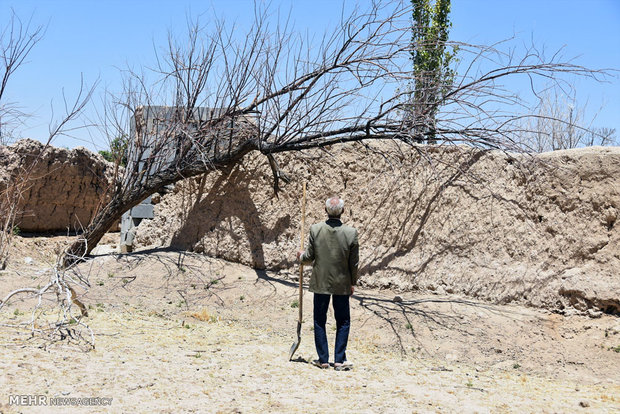

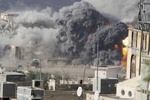
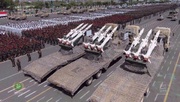

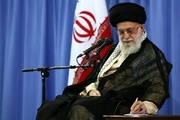


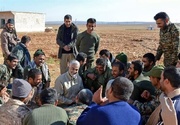








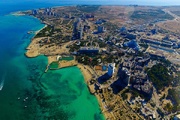


Your Comment